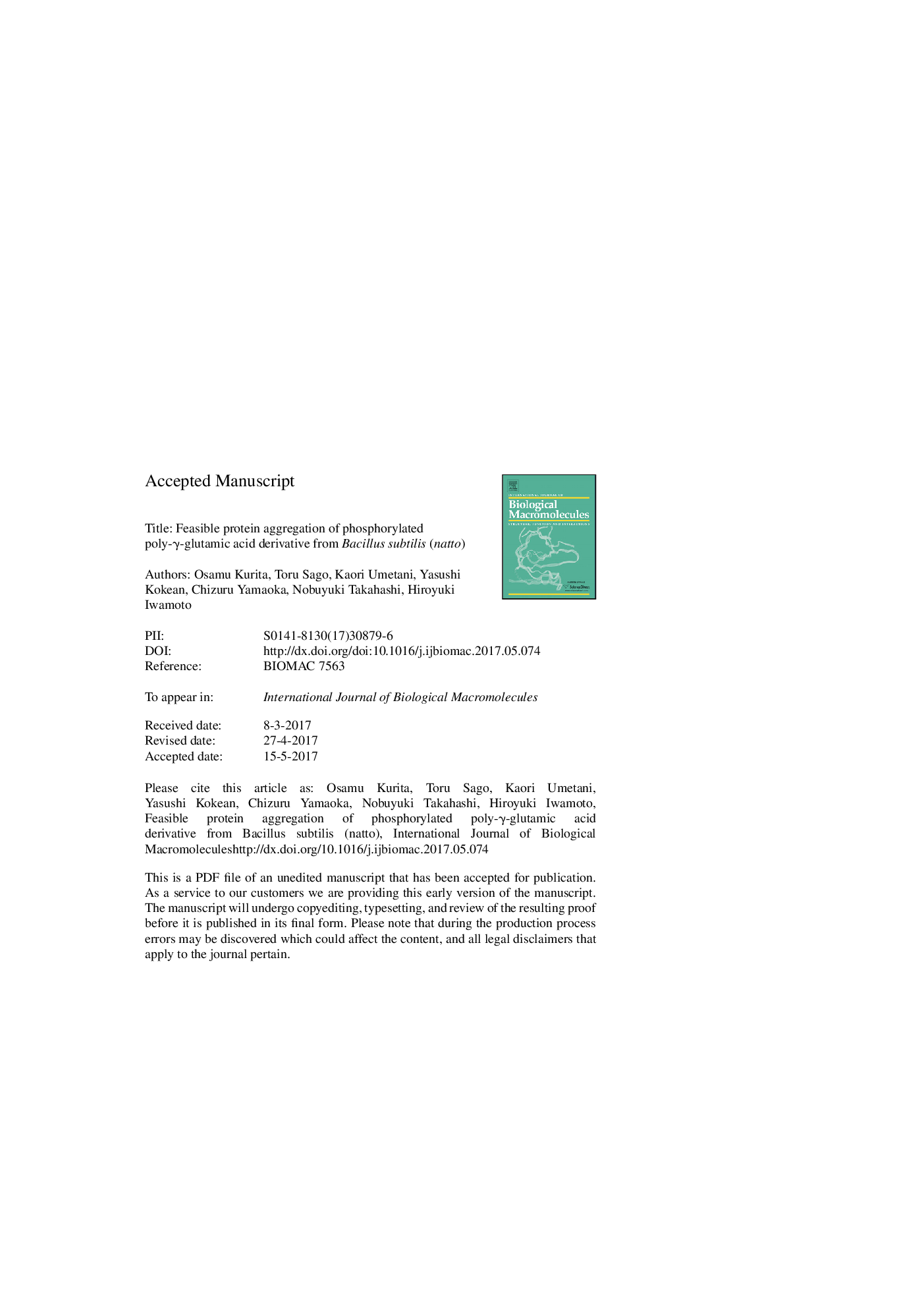| Article ID | Journal | Published Year | Pages | File Type |
|---|---|---|---|---|
| 5511878 | International Journal of Biological Macromolecules | 2017 | 40 Pages |
Abstract
Poly-γ-glutamic acid (PGA) was modified with phosphorylating agents such as sodium metaphosphate and potassium metaphosphate in the culture medium of Bacillus subtilis (natto). The highly phosphorylated PGA derivatives were prepared and investigated for their chemical and physicochemical properties. The PGA derivatives had approximately 7% (W/W) inorganic phosphorus and characteristic absorbance PO2â bands at 1082 cmâ1 and 1260 cmâ1 by Fourier Transform Infrared Spectroscopy. The derivative modified by sodium metaphosphate (J-5) was easily hydrated in water and had extremely low viscosity. The shear rate-induced transition leading to the decrease of viscosity was not observed in J-5 whereas the derivative modified by potassium metaphosphate (J-6) as well as unmodified PGA (J-1) showed the typical decrease of viscosity. In circular dichroism (CD) measurement of J-5, there was a significant loss of the negative chirality CD signal, implying that protein aggregation occured at decreasing pH from 6.2 to 4.4. The thioflavin T fluorescence intensity of the aqueous solution in the J-5 was extremely high despite the absence of heat-treatment. The results indicate that the J-5 is the likeliest type of aggregation by β-sheet cross-linking which is relevant to protein diseases like Alzheimer's disease.
Related Topics
Life Sciences
Biochemistry, Genetics and Molecular Biology
Biochemistry
Authors
Osamu Kurita, Toru Sago, Kaori Umetani, Yasushi Kokean, Chizuru Yamaoka, Nobuyuki Takahashi, Hiroyuki Iwamoto,
